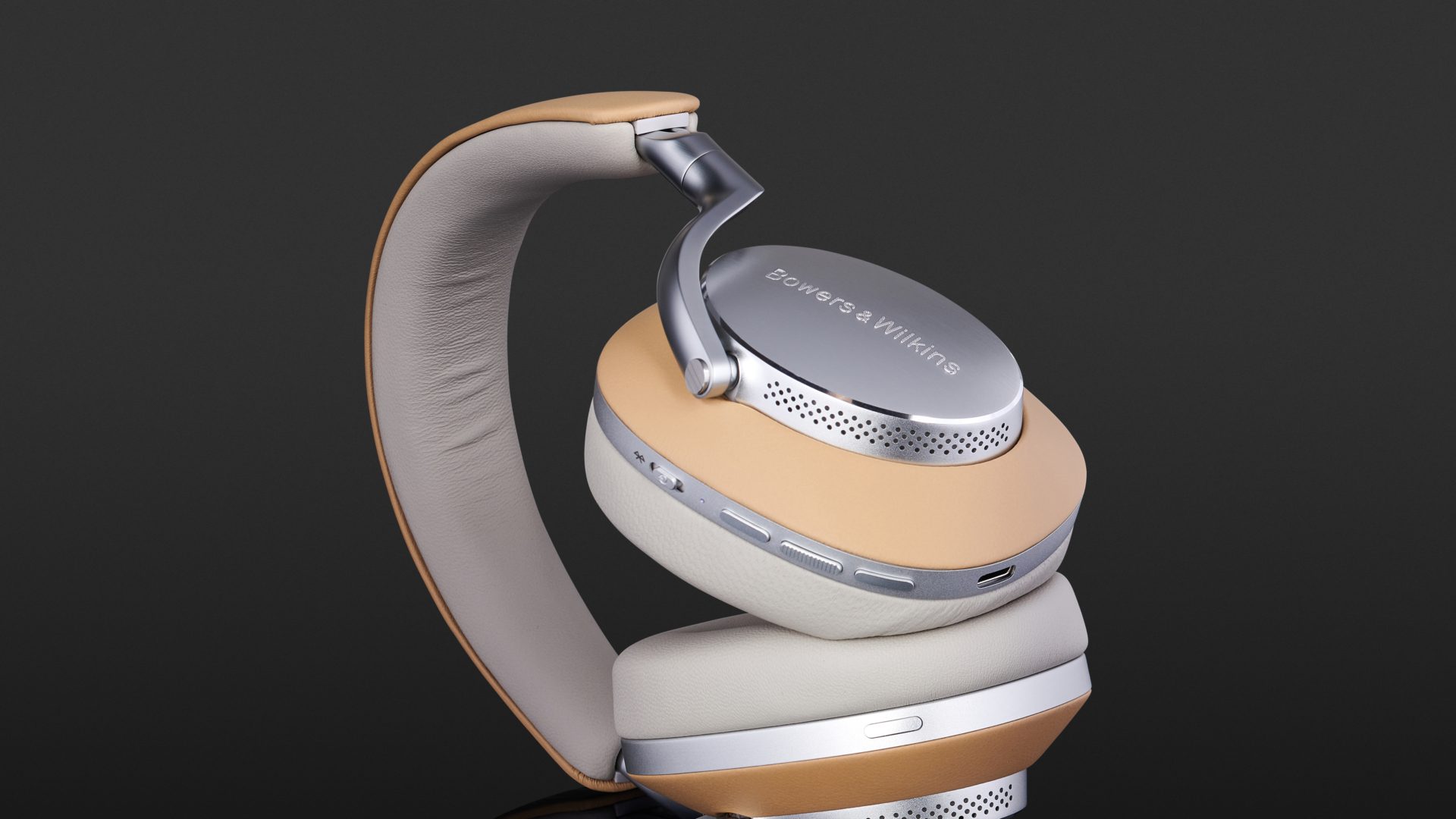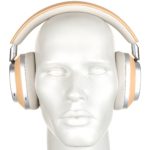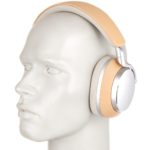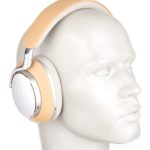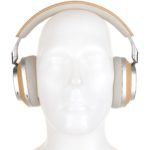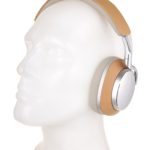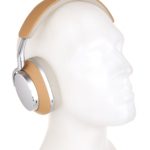The most impressive thing about the Bowers & Wilkins Px8 is the great sound. Whether you “just” pair them with your smartphone and listen to your favourite playlists or want to get the highest possible quality out of Hi-Res audio files, the Bowers & Wilkins Px8 won’t let you down. But the elegant appearance, the pleasant wearing comfort, and the functionality, including USB audio, are also impressive across the board. The price is perhaps a little too high, but still justifies the purchase for anyone who is looking for uncompromisingly good, wireless over-ear headphones.
- excellent sound
- high wearing comfort
- very good build quality
- Hi-Res audio via Bluetooth, USB audio and analogue
- convincing noise cancelling
- very good transparency mode
- excellent compatibility with the most popular operating systems
- high price
After announcing the Px7 S2, Bowers & Wilkins hinted in early summer 2022 that there was still something to come. With the Px8, their top model was joined by a premium model that, with a retail price of 699 euros, focuses uncompromisingly on quality.

The fact that good things can sometimes be expensive is evident from the materials and build quality of the 320-gram Bowers & Wilkins Px8: the first time you try them on, you feel good. Memory foam ear cups covered in the finest Nappa leather nestle comfortably around the ears, and the solid earpieces do not create an annoying feeling of pressure. The aluminium headband is also lined with Nappa on the underside and feels pleasant against the skin, while a soft mechanism moves the ear cups into the anatomically necessary position. A glance in the mirror shows that the Bowers & Wilkins Px8 is also visually impressive (even if some people might miss the once “unique” look of a Bowers & Wilkins P5 Wireless).
The technical aspects of the Bowers & Wilkins Px8
Bowers & Wilkins goes for the best possible in terms of materials. Their engineers chose carbon fibre for the 40mm cone and built the ‘speakers’ into the aluminium housing at a slight angle, which should optimise the diffusion of the sound. This resulted in perceptibly better sound quality with the Px7 S2. In addition, the Px8 offers Hi-Res sound quality and can easily handle 24-bit/96kHz files. For telephone conversations, two microphones are installed on the outside of the right pod. For noise cancelling, a total of four microphones are used. A wear sensor switches the Px8 off when it is not in use for a prolonged period or sends corresponding pause commands when the headphones are taken off and put down. In addition, the Bowers & Wilkins Px8 support Multipoint, which means that they can be logged on to two sources at the same time via Bluetooth, facilitating handling between smartphone and computer, for example.
Streaming via Bluetooth and USB audio
The Bowers & Wilkins Px8 uses Bluetooth 5.2 with the codecs aptX Adaptive, aptX HD and AAC plus SBC as the lowest common denominator. You also have the extremely practical option of bringing audio streams directly from a computer to your ears via USB-C. In this way, the aforementioned high-resolution audio signals can be transferred directly to the excellent converters of the Px8. As with the Px7 S2, audio and video processing can be carried out with minimal latency via the Px8 – a big plus compared to the competitors.
In addition to the USB-C cable, a USB-C to 3.5mm stereo cable is included to wire proprietary audio players to the Px8. In wired mode, track and volume control is disabled, but noise cancelling can be used, which enhances the enjoyment of in-flight entertainment on air travel.
Noise cancelling and transparency mode of the Bowers & Wilkins Px8
Traditionally, Bose (Headphones 700, QuietComfort 45), Sony (WH-1000XM5) and Apple (AirPods Max) have all vied for the trophy of best noise cancellation, without producing a conclusive winner. With their latest, Bowers & Wilkins have put another contender in top position with the Px7 S2 and pushed an additional contender onto the increasingly crowded winner’s podium with the Px8.
First of all, passive damping – due to the smoothly fitting ear pads – is already very good. If you switch on the ANC, a thick blanket covers the sounds coming from outside. The Bowers & Wilkins Px8 can easily handle the murmur of voices in an open-plan office and the noise of traffic with the windows open, and you can assume that there is enough silence for a power nap after lunch. If there is a “useful signal”, music or spoken content, the noise factor should be close to zero. I was impressed by the noise cancelling, and it even beat an Apple AirPods Max brought in for comparison in a photo finish. What was particularly (not) noticeable: the ANC produces zero inherent noise and also does not alter the sound in any way.
The transparency mode also plays at the highest quality level. It was easy to follow conversations with the headphones on and even to locate them precisely in the stereo field.
The sound of the Bowers & Wilkins Px8
To evaluate higher-end audio equipment, expectations of the brand and its marketing promise are bound to carry weight. It was with correspondingly high expectations that I first approached the Bowers & Wilkins Px8 for daily use. A radio programme, then my favourite Spotify playlist, in between a phone call and a short documentary from the media library. The Bowers & Wilkins Px8 always prompted me to say, “that sounds good”.
Things got exciting when I streamed high-resolution audio from my hard drive via USB. Here, the headphones showed their true qualities: classical music such as the “Allegro Moderato” with Arabella Steinbacher, Orchestre de la Suisse Romande, Charles Dutoit from the album “Mendelssohn & Tchaikovsky: Violin Concertos” in a high-res audio version delivered the performance with the anticipated sound pleasure. Both the solo violin and the orchestra’s body of sound played impressively into the sound memory with the Px8. The same file via a Pioneer XDP-30R DAC over the “analogue cable” via USB added a touch more radiance to an already high sonic level. This shows what the Bowers & Wilkins Px8 is capable of.
Spotify content in the highest possible resolution via aptX HD also confirmed what a good pair of headphones should do best: The Bowers & Wilkins Px8 cleanly fanned out the frequencies, exhibited no exaggeration and did not “forget” any sonic details. The sharp-edged basslines of my electronic playlist were delivered by the Px8 in an unagitated and spot-on manner, coinciding with the punch of drums and tight synthesizer arpeggios, which were never rendered in an unpleasant or exaggerated manner.
The Px8 handled another discipline almost predictably well: quiet music with the aid of ANC allowed me to experience the purring breath of 10cc in the track “I’m Not In Love” with wonderful intimacy. And while we’re at it: If you really want to wind down, the Bowers & Wilkins Px8 is the perfect way to enjoy your relaxation playlists.
Operation even without an app
A few more comments from listening with the Bowers & Wilkins Px8. The control via the app has been reduced to the essentials and, in my opinion, leaves nothing to be desired. The noise cancelling can be switched in the app if you don’t want to do it via the button on the left side of the headphones. If you wish, you can also activate voice assistants such as Siri or Google Assistant. There is a treble and bass control that can compensate for treble losses in the ear and, if necessary, help to adjust the bass a little to suit your own hearing.
The control on the right side of the earpiece with three buttons for volume and track switching or call acceptance and pause/stop is robust and self-explanatory. The integrated sensor can be adjusted in three steps via the app and reliably pauses playback when the user stops. However, the music must then be resumed by tapping the middle button or in the player of the playback device.
The battery life is stated as 30 hours, and 15 minutes on mains power provides 7 hours of listening pleasure. However, I was not really able to measure it in the test, as I really enjoyed using the Px8 as an audio interface on the DAW, and here power was automatically replenished via USB.
Technical specifications
- Ear couplingOver-ear
- Typeclosed
- Transducer principledynamic
- Impedance37,7 ohms
- Sound pressure level (SPL)93,21 dB
- Pressure averaged from big and small head600 g
- Weight with cable327 g
- Weight without cable314 g
- Cable length115 cm
What's in the box
- USB-C to 3.5mm stereo audio cable
- USB-C to USB-C cable
- Carrying case
Special features
- Available in black or tan
- BT codecs: SBC, AAC, aptX, aptX HD, aptX Adaptive
- BT version: 5.3
- BT profiles: A2DP, AVRCP, HFP, HSP, BLE GATT










